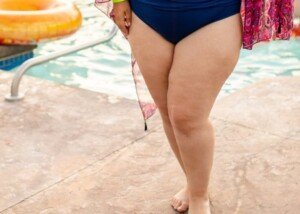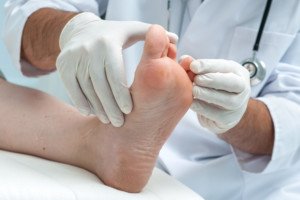Here’s how to prevent weight gain or lose gained weight as a result of your leg or ankle injury.
It’s not uncommon for people to gain weight after suffering a leg or ankle injury. I once read about a woman who gained 40 pounds after breaking her ankle.
Weight gain does not have to happen after a leg or ankle injury. After such an injury, you may find yourself spending much of the day in a reclined or upright-seated position, with minimal activity on your feet.
This reduction in physical activity can lead to more stored body fat.
Upper Body Workouts
Upper body strength training will add lean muscle mass. Muscle is your body’s metabolic furnace. The more lean mass you have, the faster will be your resting metabolism.
Plus, a good workout will continue burning fat even after the session is finished.
WAIT! Don’t even THINK about getting bulked up. When you strength train for prevention of weight gain (or initiation of weight loss) and fitness … you will NOT bulk up.
The only thing that will bulk you up is feasting on junk food while you feel helpless during your recovery.
Performing upper body workouts will help erase that helplessness and empower you.
Can’t get to a gym?
Online retailers sell all sorts of strength training devices: Dumbbells, kettlebells and tension bands are the most popular.
Best Upper Body Exercises
Upper body workouts can be done while seated. I cannot think of any reason why someone with a leg or ankle problem cannot perform upper body exercise while seated.
Below are images of the best exercises that you can do at a gym AND at home.

Shutterstock/Syda Productions

Depositphotos.com
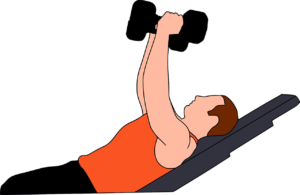
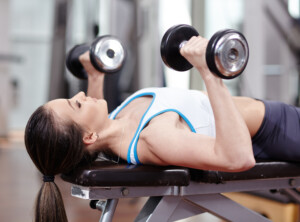
Shutterstock/Catalin Petolea


Shutterstock/Microgen
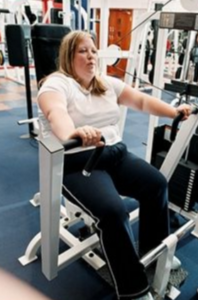
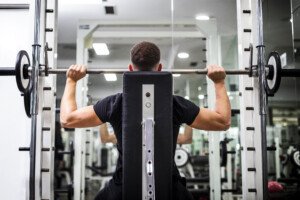
Freepik.com
Additional upper body exercises: Any back machine, any pressing or pulling motion with an anchored tension band while seated.
What if you’ve already been doing strength training but have gained weight since your injury?
Increase the intensity. A good formula for this is to use a weight load for which eight repetitions are possible, but past 12 is not.
Second, focus on the exercises shown above. Triceps extensions and arm curls are isolated movements that don’t require as much energy as “big” moves. Besides, your triceps and biceps will get worked by the exercises shown.
And of course, eat mindfully, not mindlessly, to help control your weight.
Workouts for the Good Leg?
While one leg or foot is incapacitated, you may be able to exercise the non-injured side.
For people with pre-existing fitness, you can try single-leg chair squats: rising up and down from a sturdy seat with the good leg, while maintaining a safe airborn position for the injured side.
Less fit people still have several options.
A perfectly good limb should be exercised, even if the other leg or ankle is disabled.
If you have access to a gym, you can do the following with one leg:
• Leg press
• Leg extension
• Seated leg curl
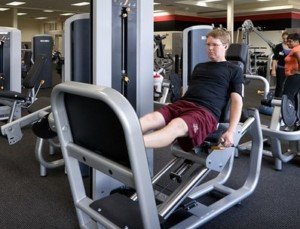
The injured leg would simply hang over the seat.
If you have only an ankle or foot injury, you may be able to do the leg extension and leg curl with both legs — depending on the injury, of course.
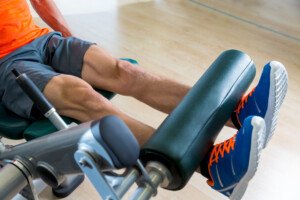
Shutterstock/lunamarina
Though the inner/outer thigh machine won’t trim the thighs, it can add value to your limited workout regimen while you recover. Plus, both legs can be used.
Walking Casts
You may be able to perform squatting variations with both legs if one is in a walking cast or “boot.” Ask your doctor about this.
Gym enthusiasts can also try the corner row and pushups.
Before embarking on any lower body strength training or upper body exercise in which the foot on the injured side is making contact with the floor, even if you’re wearing a walking cast, you should run the list of exercises by your treating physician.



